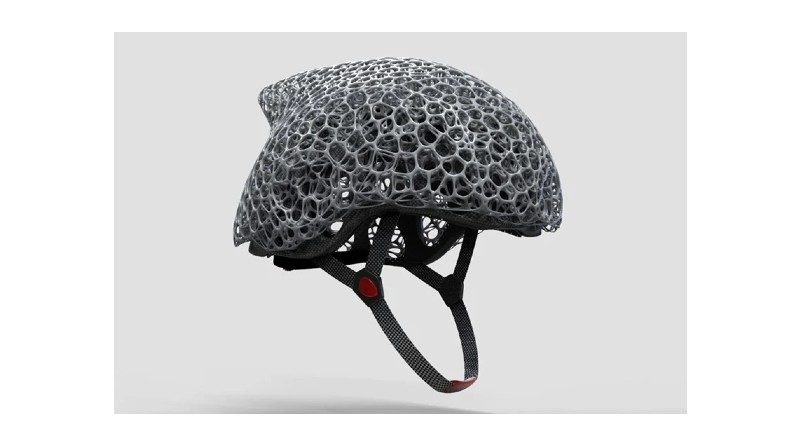New Voronoi bicycle helmet launches, made with parametric design
As the bike industry continues to evolve with the development of electric bikes and scooters, the momentum of users is naturally rising and with that, the discussion surrounding safety standards and traditional helmet design continue.
Previously, CyclingIndustry.News have talked helmet safety and compulsion, diving deeper into how the brain can be affected not just in the immediate aftermath of a bike crash, but further down the line.
The topic of helmet design has had a rebirth as brands begin to challenge original helmet designs and have created new concepts and innovative designs.
3D printing and design of bike helmets seem to be an ever growing revolution in the cycling industry with the emergence of the London based start up, HEXR, who have disregarded the traditional EPS-based foam moulding blueprint in favour of a 3D-printed honeycomb structure tailored to a customer’s head.
Additionally, the newly-launched Voronoi bicycle helmet has been awarded the A’ design award within the safety clothing and personal protective equipment design category for 2019 – 2020.
The new parametric helmet design was inspired by 3D voronoi structures widely seen in nature, such as the structure of turtle shells and animal bone. As such, the design looks to reduce the amount of material needed to create a safe bicycle helmet. The innovative design also aims to give the rider an effective balance between safety, comfort and fashion whilst with its breathable and aerodynamic design.
“With the parametric technique, we take mechanical simulation experiments of inner structure sampling points,” comment the designers, Yuefeng Zhou, Zhecheng Xu, Haiwei Wang. “Based on the simulation data, structure sampling points are rearranged properly, and the helmet finally gets an integrated structure system. Considering the convenience of parametric technique, we can directly control the density parameter of the whole structure system, and specification parameter of the supporting system. After mechanical simulation experiments of the latest structure, the result of simulation affects controls parameter, which promotes the helmet’s adaptation to different users and usage scenarios.”
The combination of parametric design and bionics achieve an effective external stabilisation system when the helmet is hit by an external force. For example, the 3D structure provides greater stability as its honeycomb like appearance is able to redirect the external impacts from the center of the helmet to other areas, and therefore creates a more stable and effective distribution of force.
Under the web-like external design, the helmet features a hard hat component made from carbon fibre, which increases the strength of the product further.
The final Voronoi product is set to come in three available sizes, different colours and is available for mass consumption from July 2020 in China.



